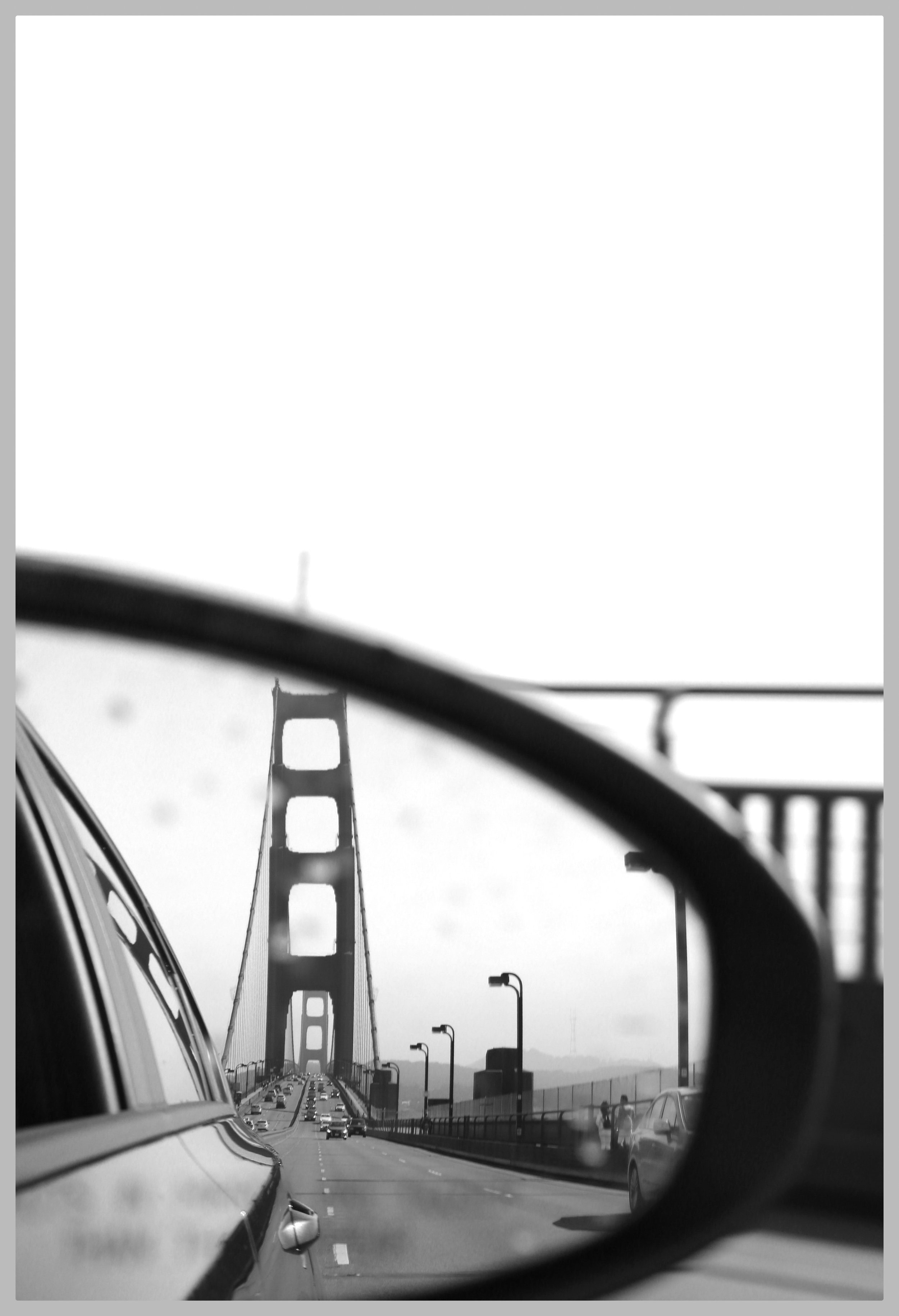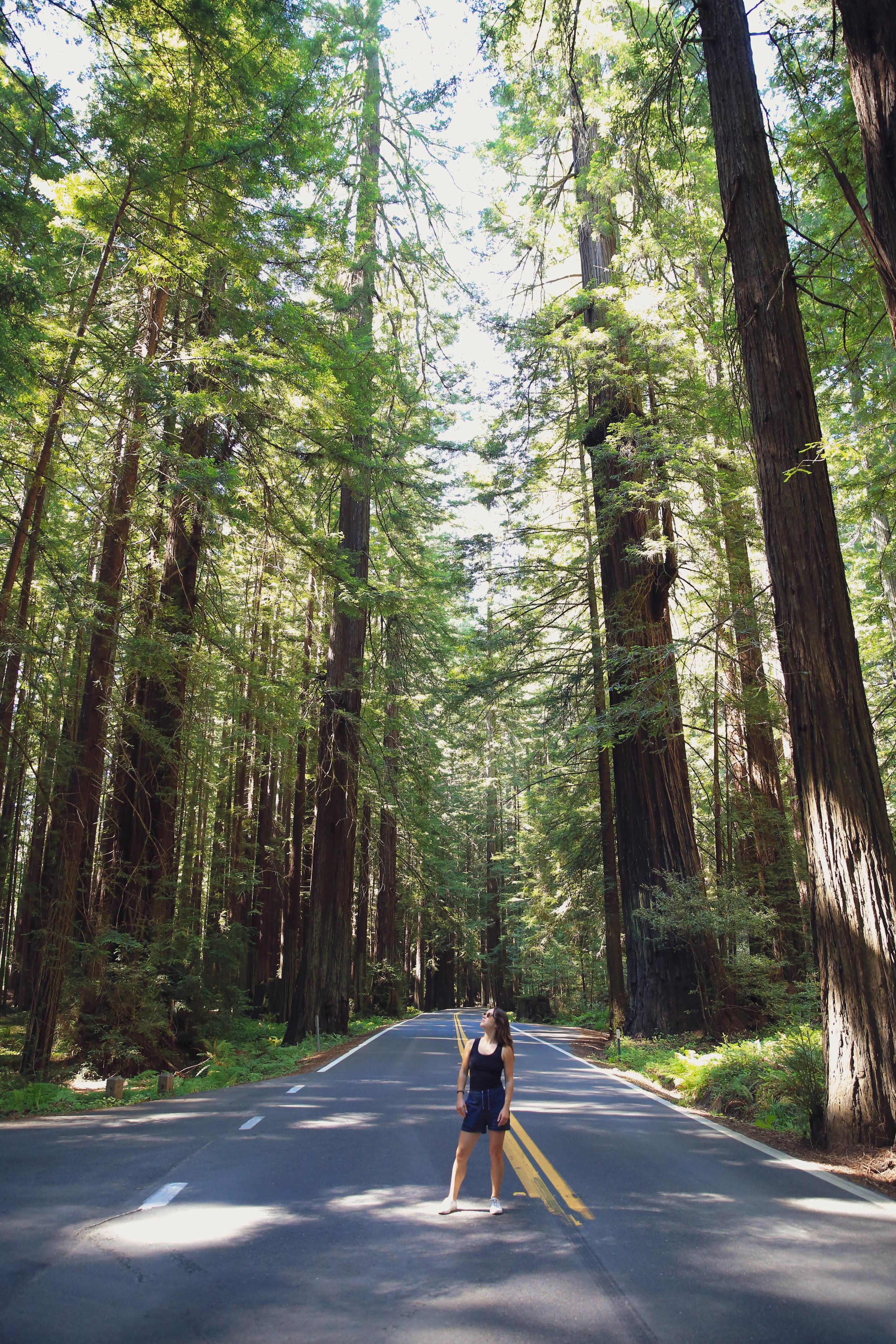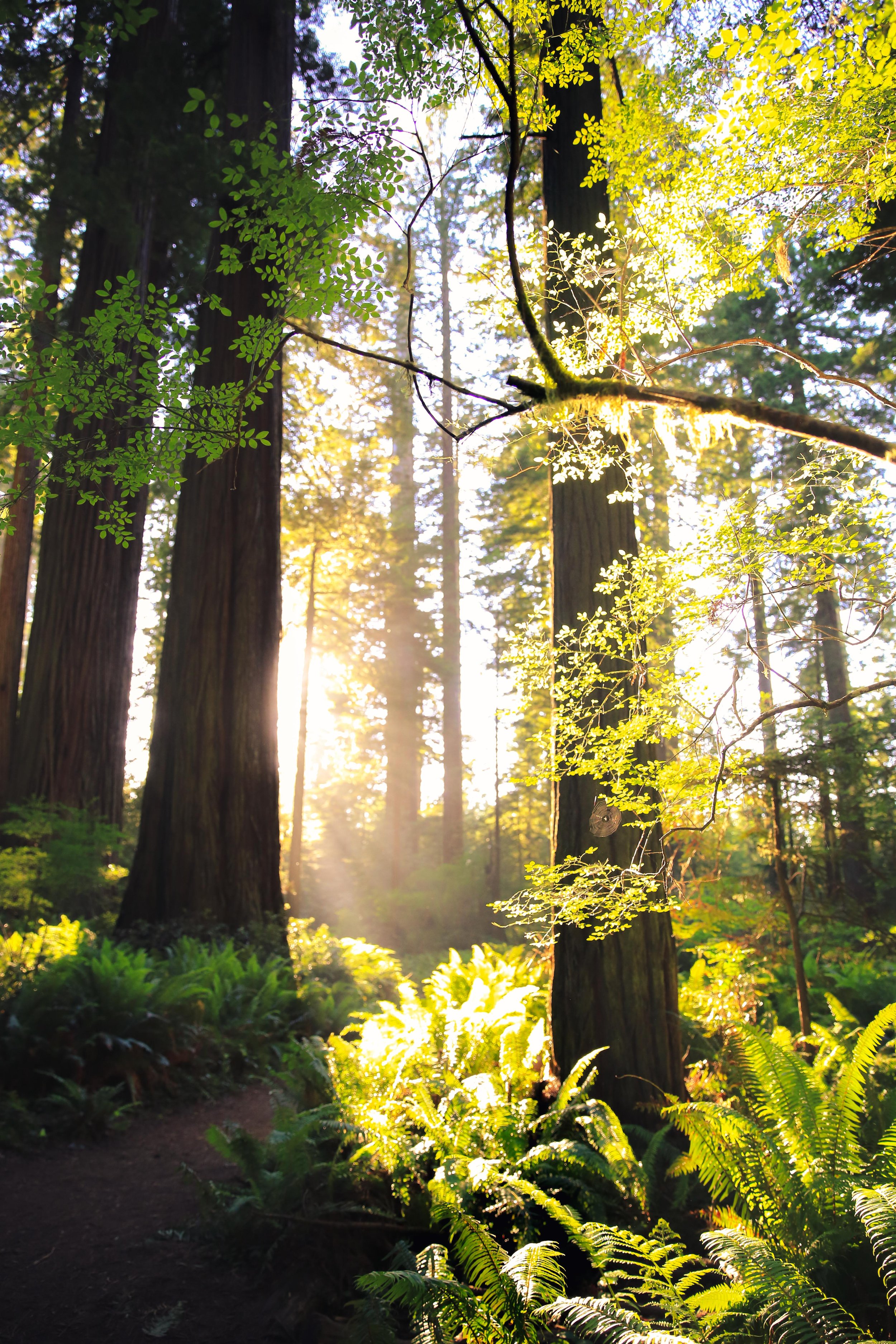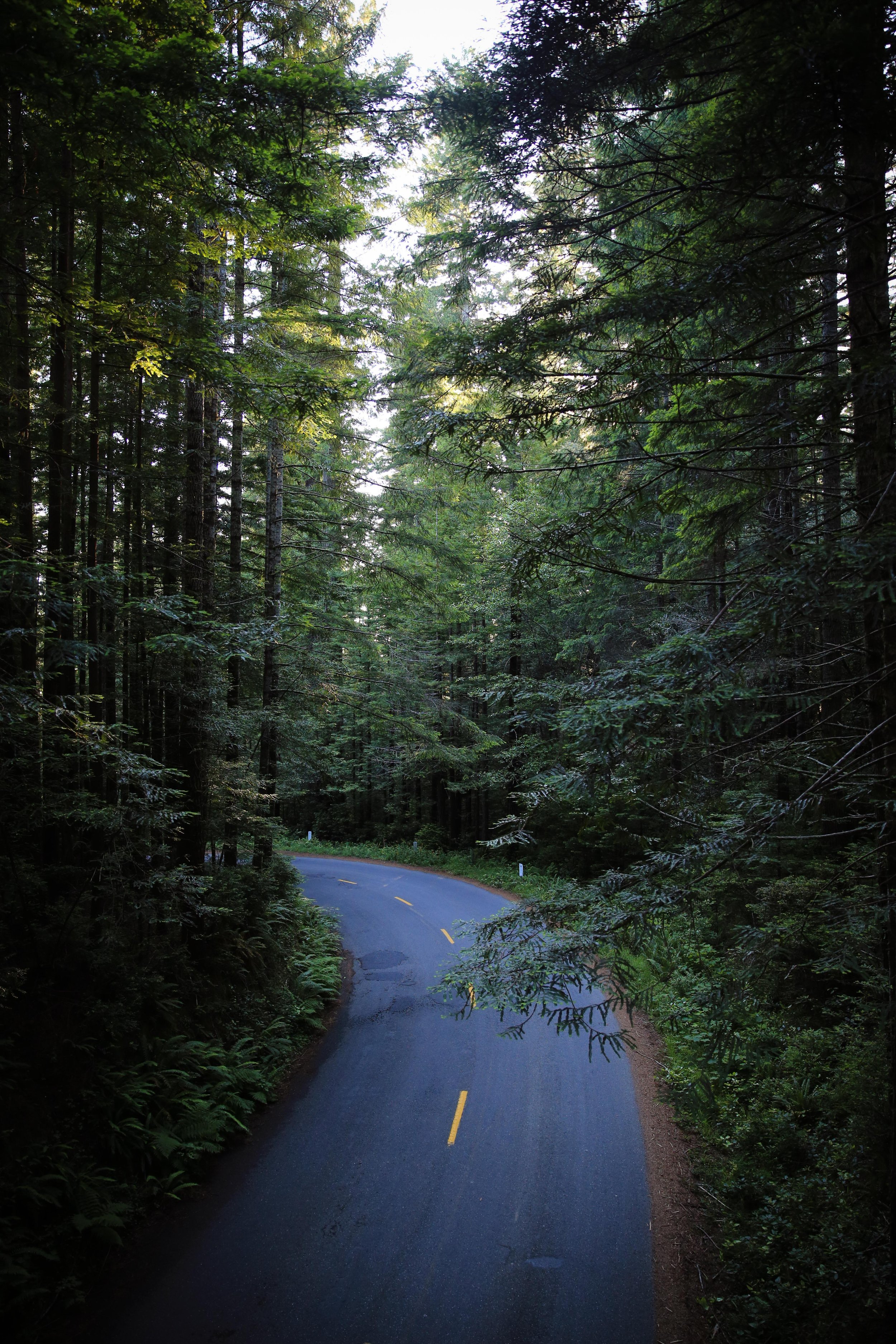As we ride our bike through the curvy steep inclines and declines of Munduk, the early morning fog peeks its way through the tips of the trees. We see local people emerging from their homes for the day, setting out morning offerings, lighting incense. Others are on their way to work, opening up shops, sweeping the sidewalks. Dogs waking up, doing morning stretches, chasing bikes down the road. The views on either side of us are stunning. Such thick jungle, the air up in the mountains is crisp, cool, and clean.
Putu Leading the Trek Through the Rainforest
We pull off to an area with a small structure manned by two people - one of which would be our guide through the thick rain forest. His name is Putu. He wore camouflage pants and rain boots and carried a wooden-handled scythe. Just like other Balinese people we’ve met, he was very self-conscious about the amount of English he spoke. As a side note, most Balinese people impressively speak multiple languages. Their own language system seems quite complex. Most people learn Bahamese Indonesian in school and can use this to communicate widely across the country. However, there are several different indigenous Balinese languages, depending on the village and caste of a person. A majority of Balinese speak the common Sudra caste language amongst themselves. However, when speaking to a stranger or a social superior, they must speak in Halus, or high Balinese. There are other languages used for priestly rituals and Sanskrit for Hindu prayer and scriptures. In addition, most people also speak English.
Anyway, despite what he said, Putu knew plenty of words and was extremely knowledgeable about the forest.
Putu leads the way through, using his scythe with each stride to cut through the much-overgrown path - nature taking its course after having not been touched the last two years. He points out different types of fruits and trees, fern plants used for food, and stinging nettles to avoid. We stopped to admire the striking trees, hundreds of years old, some of which had been taken over by the rampant growing parasitic ficus. Putu pointed out where the healthy tree stopped and where the parasite began.
Centuries-Old Parasitic Ficus Tree
About 30 minutes in, we’re soaked with the dew from the branches and the trees through which we’ve been making our way. I’m trying to remain true to my adventurous self, but the fear of blood-sucking insects is creeping into my mind. Mind you, on the bike ride over, I had a premonition that today would be the day we would see our first leech. Something I had been afraid of since Sri Lanka (never saw one). We stop for a water break and I feel something wet on my leg and before I could get a good look at it I had already frantically flicked it off.
Andrew Standing with Ficus Tree
It was small, black, and worm-like. Putu confirmed it was a leech. It is the rainy season - the leeches are less of a possibility and more of an inevitable.
We continue our trek and I’m wishing I hadn’t worn shorts. Yanking my hiking socks as tall as they will go and trying to stay brave, but constantly turning around to Andrew with a face of fear. We get to a point where we are through the thick of it.
We are walking on an actual 10 ft wide path now, for about 10 minutes.
Then we reach a fork in the road where Putu looks to us to decide - continue on the walking path or forge our way again through the thick jungle. I have a really hard time backing down from a challenge. Andrew knows this, and I wish it wasn’t the case, but I know I will have so much more regret if we take the easy way than vice versa. “Normally, we would go through the jungle, but it’s up to my wife,” Andrew says with a bit of a tease. Onward we go.
Less than five minutes later Andrew has a leech attached from both ends to his stomach. He pulls it off, with a bit of a struggle, and Putu rushes over to stick some dried tobacco onto his skin to stop the bleeding. Andrew assures me it wasn’t too bad, – hard pass, no thank you, nope, nope, nope. I do a quick check on my legs, nothing. But then Putu comes over with his giant scythe and proves that I’m a terrible detector of leeches. He picks a dozen off of my hiking shoes. I still to this day think about where those leeches would have attached. Thank God for Putu. We keep trekking.
We come to a break in the jungle that lends itself to a quaint temple in the middle of nowhere. Its yellow and white embellishments stand out richly in the haze and luscious greens of the forest.
A Balinese Hindu Temple in the Jungle
He explains that there are communities of people that live in the jungle, and takes us to one of their homes. We approach a family of a mother and daughter. Their home is built from the ground up with thin planks of wood, probably from the very jungle where we were standing. There is no insulation, furniture, or anything inside the structure of the home. I notice a tank attached to the back of the house for clean drinking water. Their garden is a pretty good size, they are probably close to 100% self-sustainable. There is a sticker on their window - some sort of official government acknowledgment. I looked it up later to see what it meant. The literal translation was ‘poor person’.
They welcome us, although we do not speak any of the shared languages. Putu does, and he greets the woman warmly. We take a seat in their front garden area and sip on our water, using the only common communication we know - hands in prayer, a bow of the head, and a smile.
Putu picks a few fruits from the tree - they are called ‘snow fruit’ or ‘ice cream beans’ - Andrew loves this term. You crack open an outer shell to find little fruits covered in a fuzzy white snow-like coating. There's a seed in the middle but the outer flesh is sweet.
Andrew Eating Ice Cream Beans
It becomes apparent that the little girl wants to take a picture of us but is too shy to ask. We have the camera, so we break the ice by asking if it’s ok if we take a picture of her and afterward, asked her if she wanted a photo of us. She was delighted.
A Family on the Front Porch of Their Home
We move on towards the lake. Once we arrive, Putu hires (or grabs a pre-arranged) ride on a traditional dug-out canoe. With Andrew and I helping (at times) with the paddling, but Putu and our boatsman leading the way we make the 30-minute crossing over Tamblingan Lake.
Traditional Dug-Out Canoe
Canoeing Across the Tamblingan Lake
As we paddle, the lake is dotted with fishermen’s floating docks, pads with blooming lilies, and an ancient-looking temple in the distance.
Fisherman on his Floating Dock
When we reach our destination, the Gubug temple comes to life. From each angle, it seems even more magnificent. This nearly 1,000-year-old sacred site remains an important place of worship for the local community. We snap a few photos with the stunning lake and mountain scenery as our background and make our final walk back to our bike.
Gubug Temple
On the road to the parking lot, bikes driven by local children - who couldn’t have been more than 13 - pass us continually on the road. Putu explains that parents have to teach their kids how to drive at an early age around this area, as a means of getting to school without taking up their parent's valuable working time. Finally, we arrive back at our bike, undergoing one final leech check before thanking Putu for a day well done.
- Blair








































































